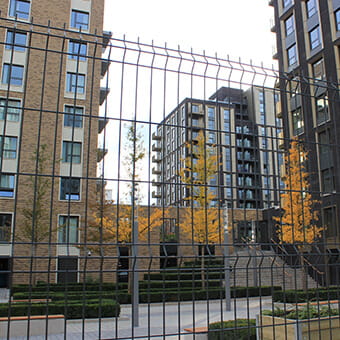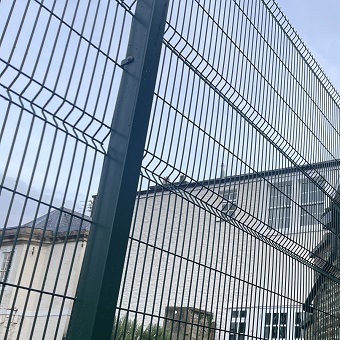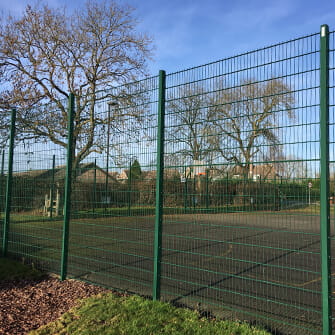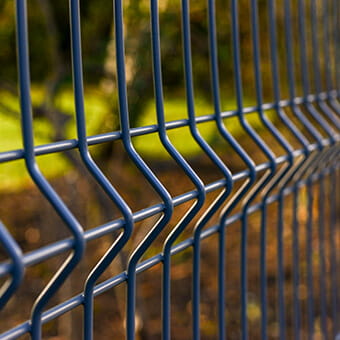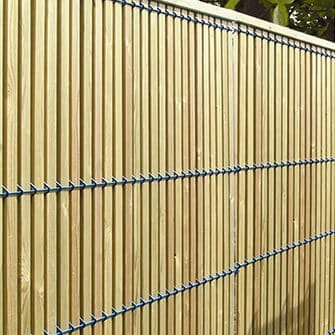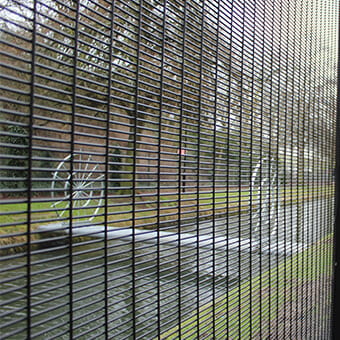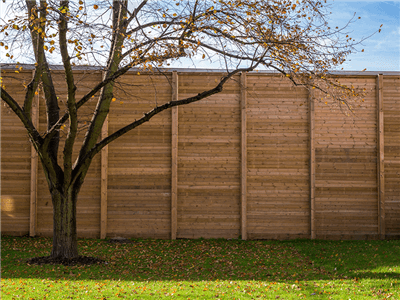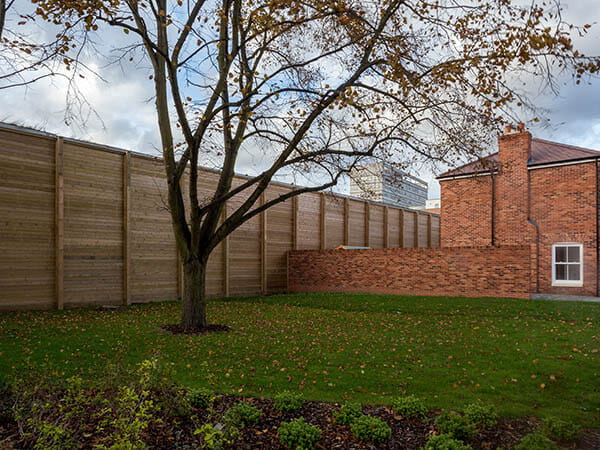Our other sites:
Noise is an unavoidable part of modern life. From road traffic to construction sites, trains to busy leisure venues, unwanted sound can affect health, wellbeing, and day-to-day life. The World Health Organisation has highlighted how long-term exposure to noise pollution can have negative effects on both mental and physical health, which makes finding effective solutions all the more important.
With growing awareness of these impacts, acoustic barriers are becoming an essential feature of residential, commercial, and infrastructure projects. But with a wide range of materials and designs available, the best choice will always depend on where the barrier is used and what it needs to achieve.
Types of Noise Barrier
There are many types of noise barrier, including timber, metal, concrete, brick, acrylic, gabion walls, and earth bunds. When choosing between them, factors such as footprint, sustainability, appearance, and cost should be considered.
For example, concrete and brick walls provide high levels of noise reduction but can be expensive and visually imposing. Acrylic offers transparency where visibility is required but is less durable over time. Gabion walls are effective but need considerable space, while earth bunds blend naturally into the environment but are not always practical.
Timber acoustic barriers remain one of the most versatile solutions, combining effective noise control with a natural appearance suitable for a wide variety of settings.
Timber acoustic barriers come in a range of designs to suit different settings. Reflective barriers work by bouncing sound away and are often chosen for residential and industrial areas, while absorptive versions are better for enclosed or high noise environments, where they can trap and reduce sound more effectively. For large-scale projects such as roads or commercial sites, specially engineered highway barriers are available to meet strict standards. Where a lighter, more economical option is needed, barriers like the 12K Envirofence® provide a practical solution for reducing noise in less demanding conditions.
For a more detailed look at the different options, see our blog on types of noise barrier.
Applications of Acoustic Barriers
The most effective acoustic barrier will depend on the environment in which it is installed. We always advise employing the services of an acoustic consultant to determine the right fit for your specific project, as it depends on a number of factors including the position of the barrier in relation to the noise source and receiver etc.
Residential areas
Properties near motorways, roads, railways, or busy public spaces often use timber acoustic fencing to reduce the impact of environmental noise while maintaining a natural appearance. A new housing development next to a motorway chose reflective acoustic barriers to create quieter outdoor spaces for residents (see case study).
Commercial and industrial sites
Factories, warehouses, and utilities produce continuous background noise from machinery and vehicles, so acoustic barriers are often used to help sites meet regulatory standards and lessen the impact on nearby communities. In many cases, absorptive barriers are preferred, as they are particularly effective in enclosed or smaller spaces where noise needs to be contained. Using reflective fencing in these situations can sometimes worsen the issue by causing sound to bounce back and create echoes. For example, a transport hub installed acoustic fencing to manage operational noise near residential areas (see case study).
Transport infrastructure
Highways, railways, and airports present some of the most challenging environments for noise mitigation. Barriers in these settings are usually taller and heavier duty, with absorptive variants used to prevent sound reflecting back into surrounding areas. Transport projects typically use a single reflective barrier, or two absorptive barriers positioned on either side of the track or road. Road applications in particular tend to favour reflective barriers. Acoustic barriers can also be used around train servicing depots to reduce operational noise (see case study).
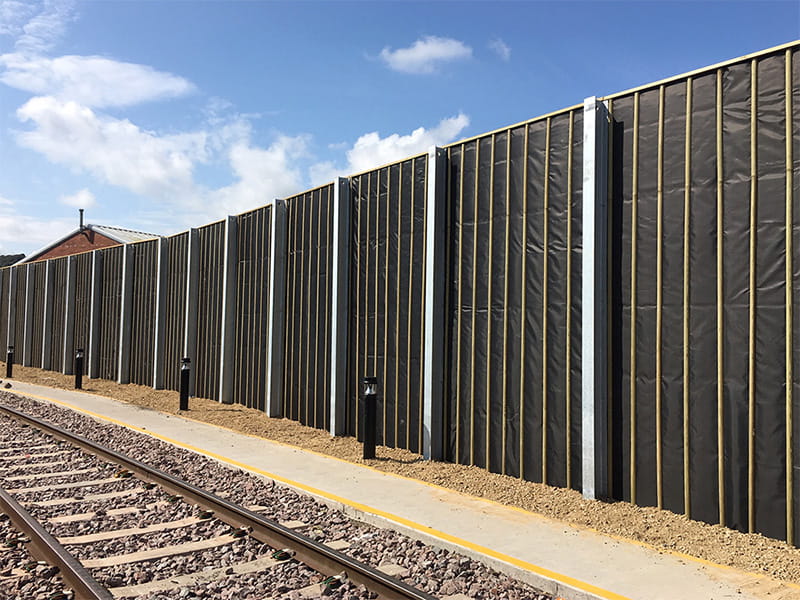
Schools and healthcare facilities
Learning and recovery environments rely on peace and quiet. Acoustic barriers have been installed around schools to reduce disruption from traffic (see case study), and around hospitals to create calmer conditions for patients and staff.
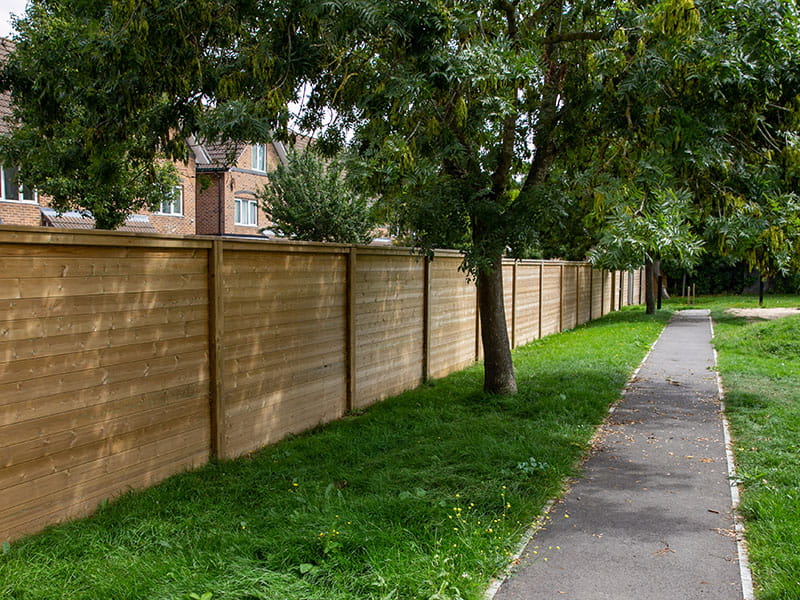
Sports and leisure venues
Large crowds and amplified sound often create disturbance outside venues. Acoustic fencing helps to contain noise within stadiums (see case study) and arenas, and has been used for other sports and leisure venues, for example a tennis facility (see case study).
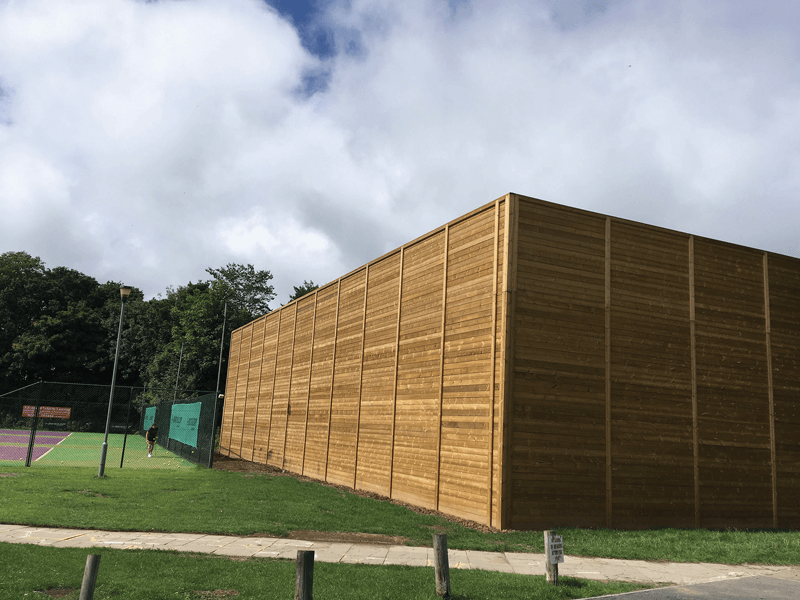
When to Use Acoustic Barriers
Not all fencing will provide acoustic performance. To be effective, barriers must be solid, imperforate, and of sufficient mass to block or absorb sound. Factors to consider include:
- The type and intensity of the noise source
- How close the barrier is to the noise or to the area being protected
- The required level of reflection or absorption
- The height and location of the barrier
- The space available for installation
- Aesthetic or environmental concerns
The height and placement of an acoustic barrier will make a significant difference to its effectiveness, which is why we always recommend consulting a qualified sound engineer or acoustic consultant before making a purchase.
In practice, acoustic barriers are often used where environmental noise could disrupt everyday life, breach regulations, or affect the experience of those using the space. Read more about how acoustic barriers work here.
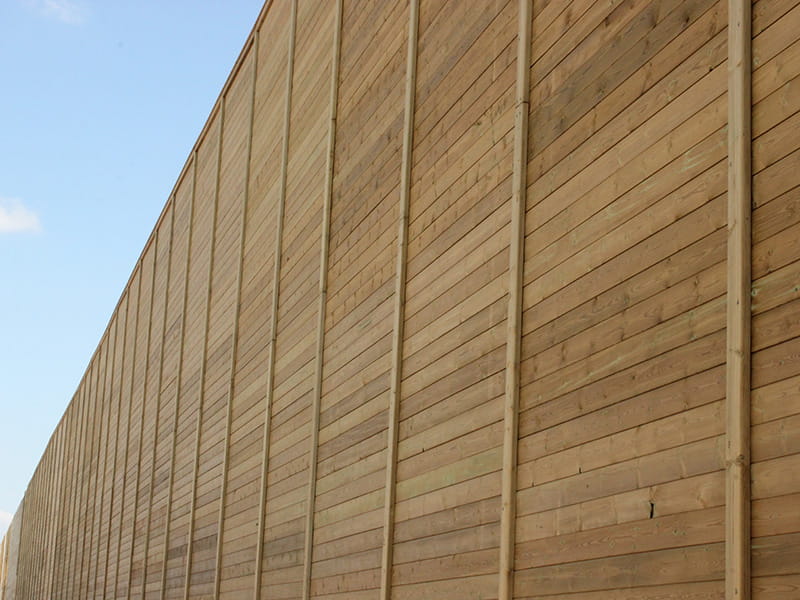
In Conclusion: What is the Best Acoustic Barrier?
The best acoustic barrier is the one most suited to its setting. Heavy duty options may be needed for major transport routes or industrial operations, while timber systems often provide the ideal solution for residential, community, or leisure sites where appearance matters as much as performance.
Acoustic barriers work by interrupting the path of sound, either reflecting it away or absorbing it to reduce echo. With the right specification and design, they can transform noisy environments into more liveable, productive, and sustainable spaces.
In conclusion, the best acoustic barrier is the one designed for its specific environment. For a motorway or major road, a heavy duty, UKCA marked system is required to manage traffic noise. For a residential development, a timber acoustic barrier can provide high performance while blending naturally into the surroundings. For a stadium or sports venue, an absorptive barrier helps to contain crowd noise and prevent echo. Each setting has its own demands, so the most effective barrier is always the one that balances performance, cost, and appearance with the unique requirements of the site.
Related products
Jacksons Security has a range of products relating to this article, all complete with our 25 year service life guarantee. If you cannot find the item you are looking for, please do not hesitate to call our friendly sales team.
Related Content
Top


